Similar Posts
Andre Raileanu is a young Romanian icon carver I have been keeping my eye on for a while now. We have already written a few articles on the amazing things happening in Romania ( here, here and here) but Raileanu’s exploration of stone carving stands very much on its own as both an exception and a worthy representative among the more famous painters Romania has to offer.
His work is quite potent and shares some of the explorations of modern aesthetics found in his contemporaries such as Gabriel Toma Chituc and Ioan Popa. He preserves the simple rawness of stone, reinforcing it with a sparse approach to composition, and contrasting this minimalism to a refined and subtle capacity to capture facial expressions. And really it is those faces that grab us as they float in the bare stone. So many icon carvers are technically proficient, but few of them can capture the depth of iconic faces, the sober sadness and profound gaze which characterizes our favorite painted icons.
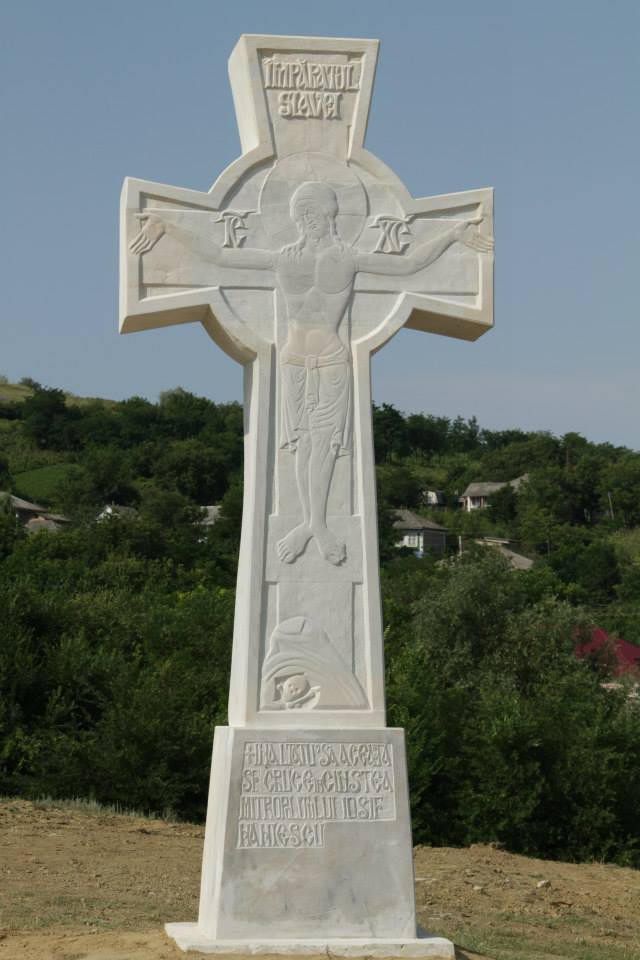 He told me that to find a theological meaning to justify volume instead of a bi-dimensional approach would mean a
He told me that to find a theological meaning to justify volume instead of a bi-dimensional approach would mean a“big endevor because the two domains, painting and carving, work using different principles. in painting, the emphasis is on color and the illusion of the reality while on carving the emphasis is on volume and material”
“(I) believe that the answer to this dilemma was given by the Church following its tradition where the painted icon has the main role. A religious carving is better the more unobtrusive it is. In that way the carving potentiates and sustains the painted icon. Regarding the carved icon I have to admit that it does not give me the same state-feeling as the painted icons. Most probably, this is the reason for my tendency to refine as much as possible the relief of the icon. It is an attempt to cancel the materiality through the material, which is more easy to do using painting.
A major role is the light which in carving is exterior, is not coming the interior as in painting. Carving is not radiating the light, but rather reflects it. Therefore I’m looking for materials with a light chromatic such as white stone, which become one with the light. It starts a dialog with the light.”
Some of Andrei’s comments might seem extreme, such as the idea of “canceling materiality through the material”, but as an icon carver myself I can understand the struggle he is facing. I myself have discussed the question of “materiality”, shadow, a “dark glory” which acts as a counterpoint in the more usual theology of light. And so I think statements regarding materiality need to be understood in light of “dead flesh”, the “garments of skin” which are fallen materiality, and in this context his comment echoes our belief that Christ “trampled down death by death.”
What we definitely find in Andrei’s statements is a humble vision to his own craft and its place in the church, and such humility is possibly the reason why, in his secret struggle, the face of Christ appears so clearly, so boldly and with such depth.
More of his work can be seen on his facebook page.

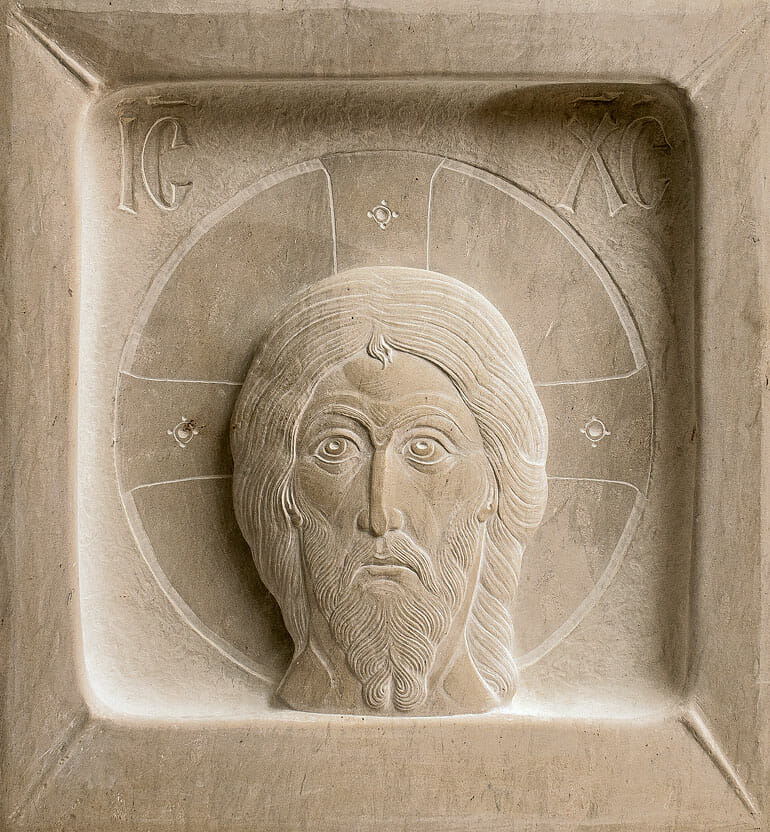
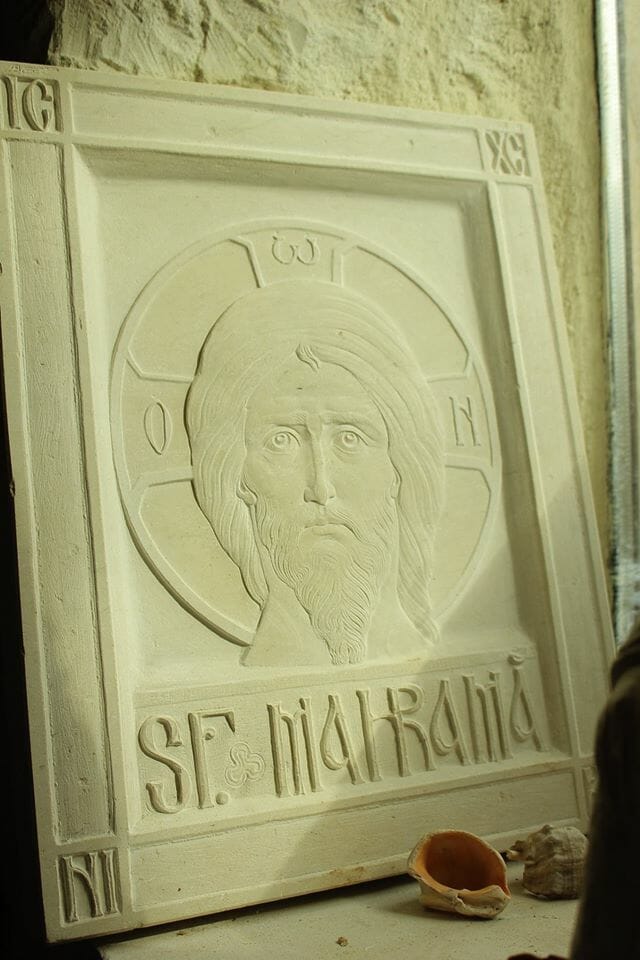
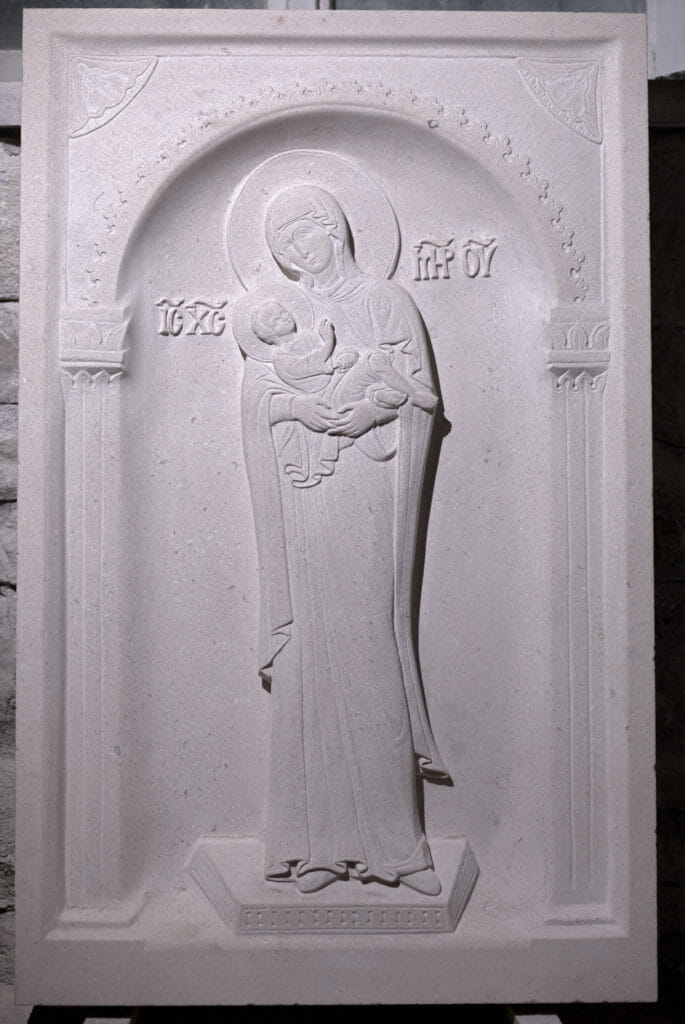
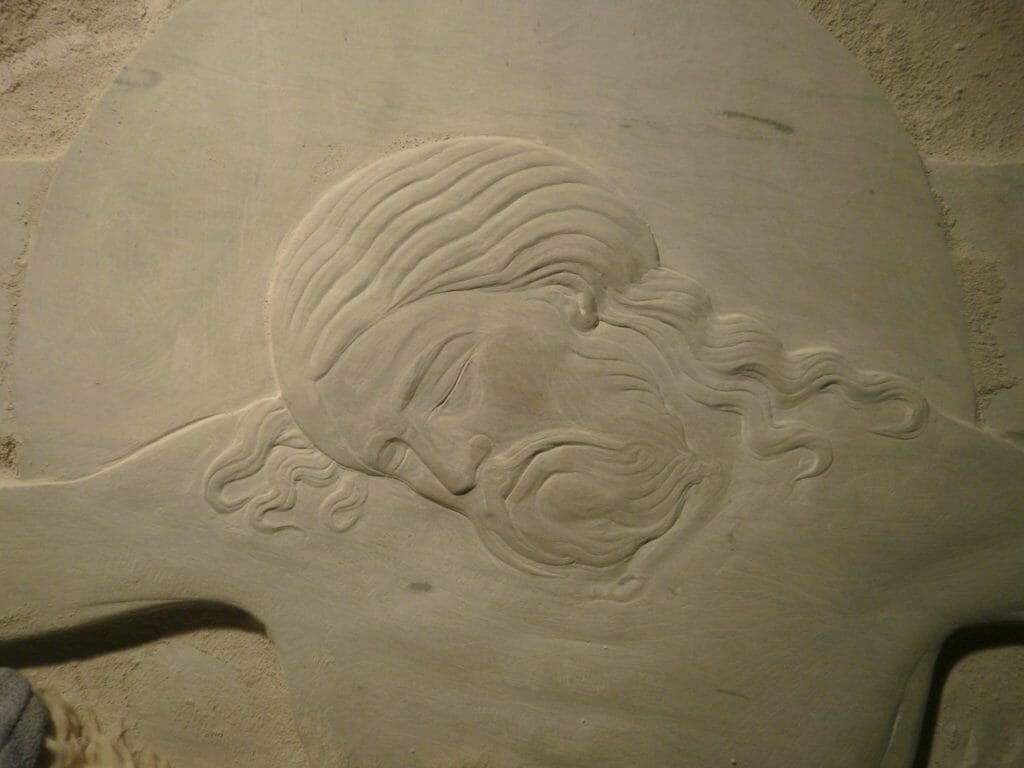
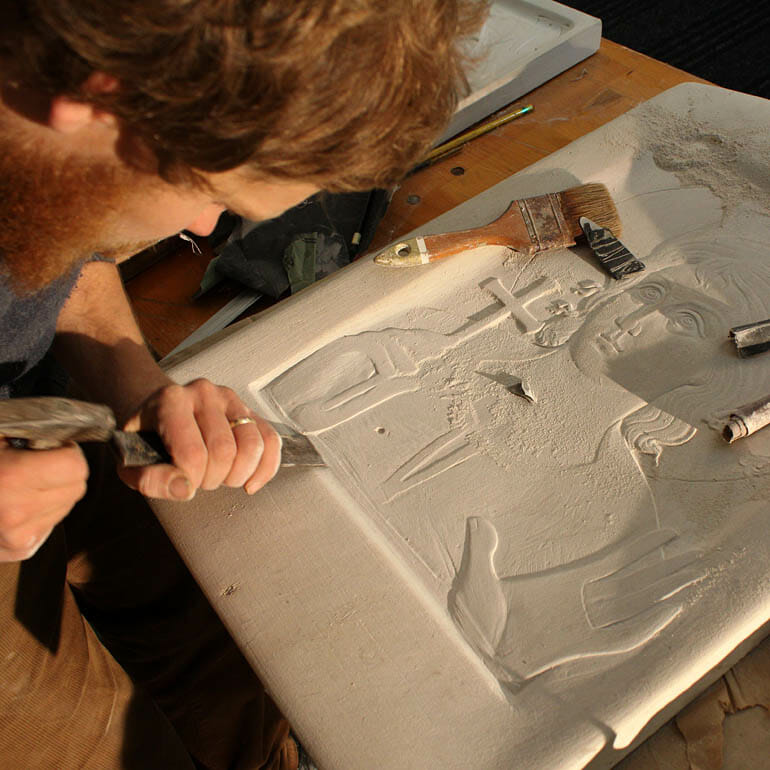

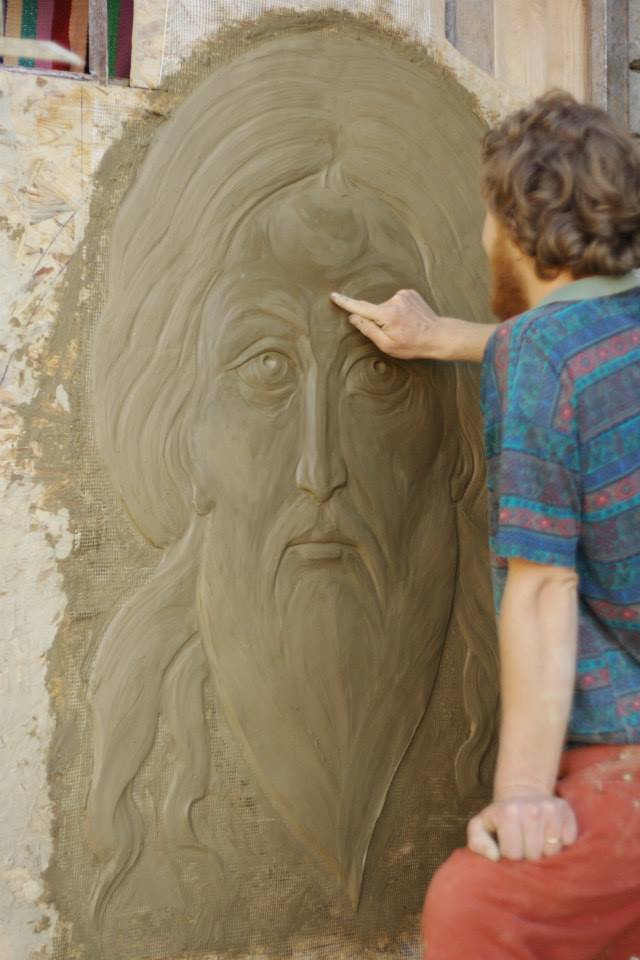
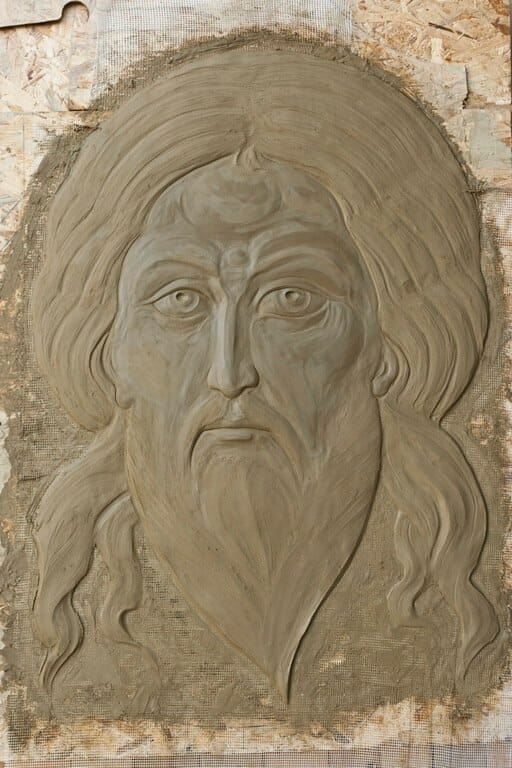
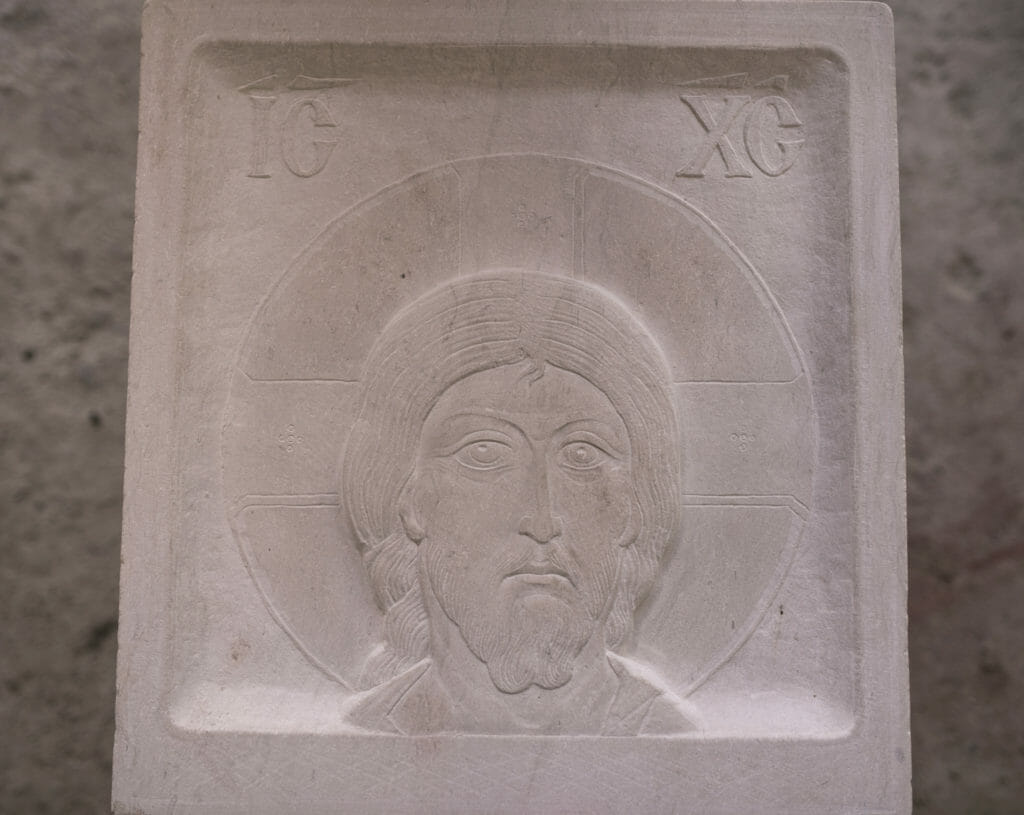
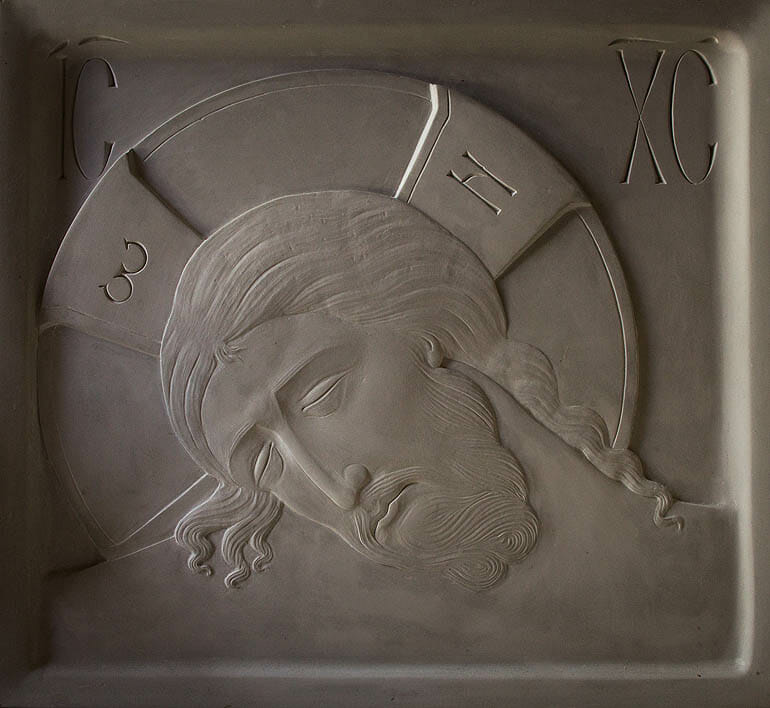
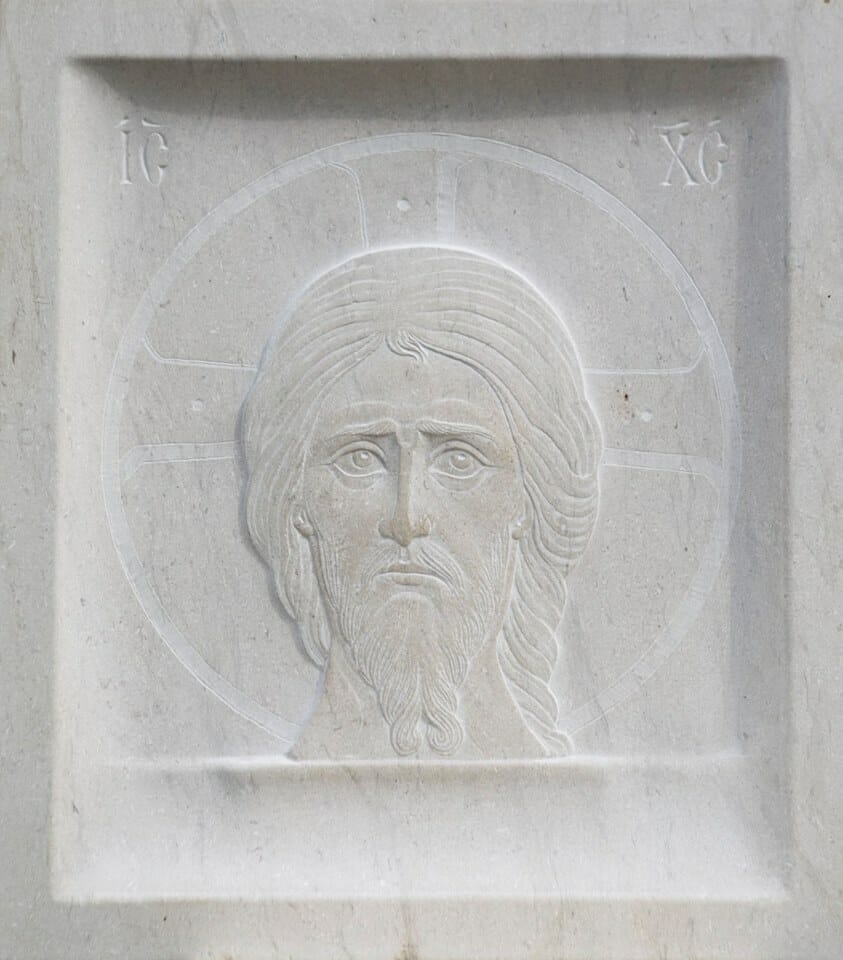
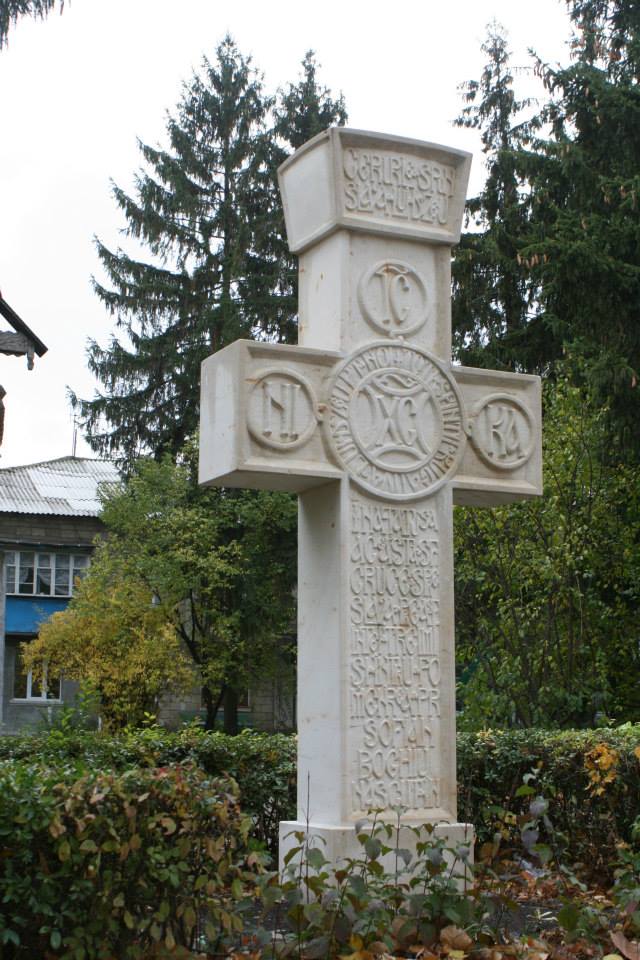
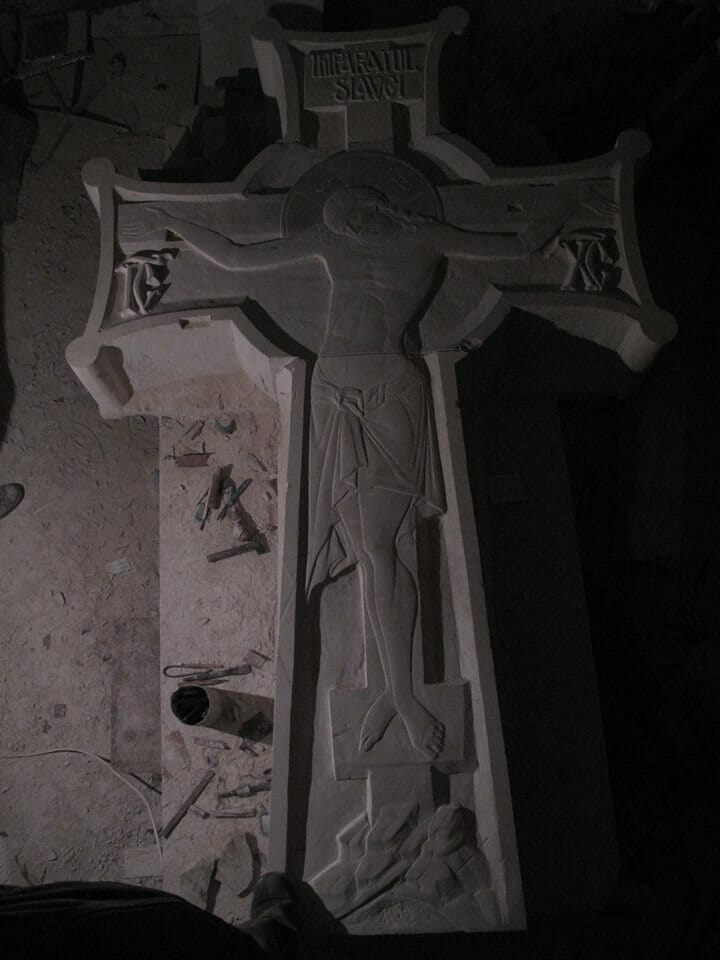
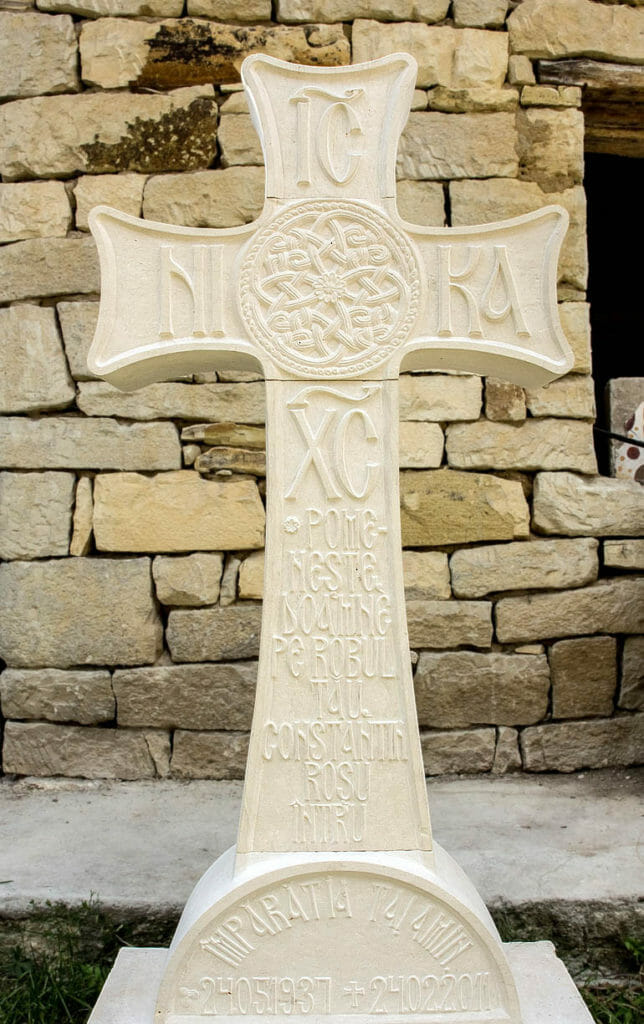
beautiful work. Do you know what the english translation to the word on the cross?
“It is an attempt to cancel the materiality through the material,”
Is it really necessary to do this? I appreciate the reality that painted Icons are able to depict, but question wether carvings need to imitate, or be evaluated in the same way?
“And so I think statements regarding materiality need to be understood in light of “dead flesh”, the “garments of skin” which are fallen materiality, and in this context his comment echoes our belief that Christ “trampled down death by death.”
We are Neo-Patonic, God is not at war with His own creation and this material world is not the enemy but our own “flesh”, our sin of rebellion that we must die to. God’s presence is not just experienced within the “Energies” of God and that Transcendent Reality, but within the “Clay” of this world which God Incarnated and united to Himself. He, in that Kingdom holds on to that same “Clay”. Wouldn’t we say that the “material” nature, such as stone, has not been made worthy to hold some true image of man and the Divine for the simple reason that it exists and has it’s own mode of expressing and glorifiying God? If the first Christians used it for relief on stone burial stones, is there really a tension with “matter, as apposed to just another area of Christian Reality? A living, breathing Saint fleshes out into the material world not only by what he says or does but his very presence in the flesh itself is a statement of the true existence of God. Sculpture in some way does the same thing, I think, it has that same sense of presence that painting can never give, and so it fleshes out in another way the reality of what we understand.
I will have to read your other comment on “materiality. Modernity does not own the words or the Reality we see around us.
I think this artists work is exceptional and should be appreciated perhaps in a broader sense.
I agree with your comments. I wanted to let Andrei have his word and at the same tame I also want to give my own angle on them to avoid such expressions being interpreted in a neo-platonic way. Please read some of the things I have written on this if you have the time, on the place of darkness in the glory of God.
Thanks, I will also read some other things you have written.
In a certain sense, doesn’t any representational art seek to dematerialize, by definition? When an artist makes something into a picture of something else, he wants us to look past the material that is really there and see the ‘subject’ that is not really there. He wants the image to be seen, and not just the material it’s made of.
So I think we should accept dematerialization as a most basic tool of art, and not equate it with a theological distrust of material creation.
To me, the bad extreme we want to avoid is when the image completely overwhelms the experience of the material from which it is made, like in a typical photograph, or (dare I say) in a printed icon. In contrast, medieval art is characterized by a beautiful symbiosis between the material and the image – we are always equally aware of both, and the beauty of the material reinforces the beauty of the subject depicted.
Once again I am immensely grateful to Jonathan for bringing such deeply moving Art to those interested in iconography and its relevance today.
These stone carvings are deeply moving icons, done with great skill, deep listening and a creative gift.Thank you Andre Railenu!